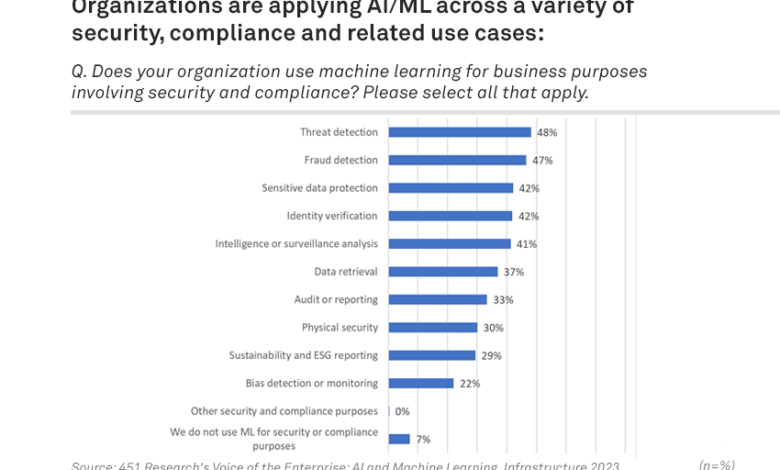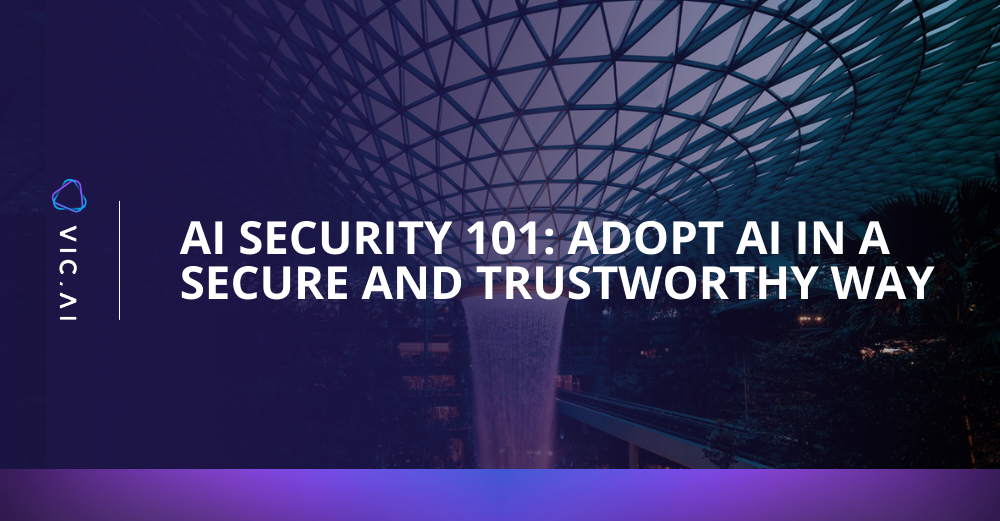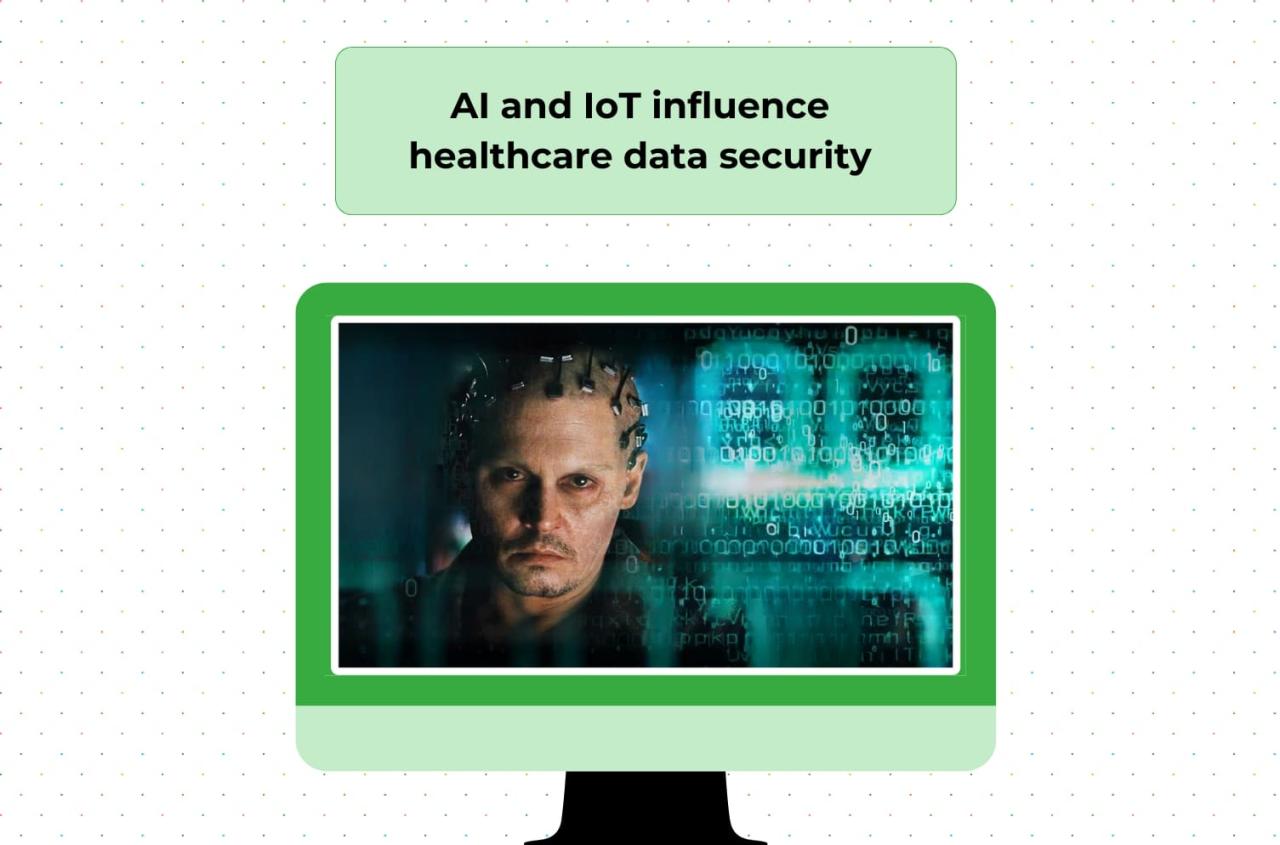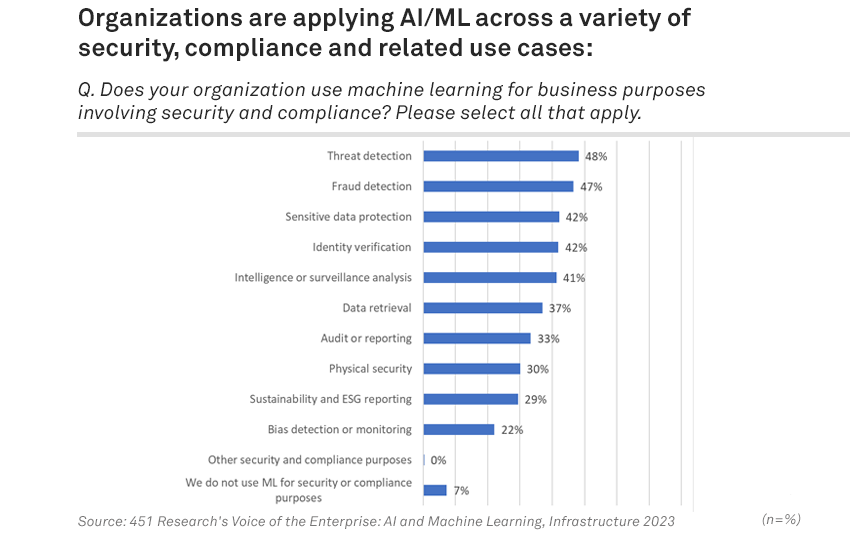
AI and Application Security Time Savings and Trust Issues
AI and application security time savings and trust issues are inextricably linked. While AI promises to revolutionize application security by automating vulnerability detection and streamlining workflows, leading to significant time savings, it also introduces new challenges related to trust and transparency. This post explores the exciting potential of AI in boosting application security speed while acknowledging the critical need for responsible development and deployment to maintain trust and prevent unintended consequences.
The speed and efficiency AI offers in identifying and mitigating security threats are undeniable. However, the inherent complexities of AI algorithms, including potential biases and the “black box” nature of some decision-making processes, raise concerns about the reliability and accountability of AI-driven security systems. Balancing the benefits of increased speed with the need for robust oversight and transparency is the central challenge facing the industry.
AI’s Role in Enhancing Application Security
The integration of Artificial Intelligence (AI) into application security is revolutionizing how we identify, prioritize, and remediate vulnerabilities. AI’s ability to analyze massive datasets and learn from patterns allows for a significantly more efficient and effective approach than traditional, manual methods. This translates to faster response times, reduced costs, and ultimately, a more secure application landscape.AI algorithms automate vulnerability detection processes by leveraging machine learning models trained on vast repositories of known vulnerabilities and attack patterns.
These models can analyze source code, network traffic, and system logs to identify potential weaknesses that might otherwise be missed by human analysts. The speed and scale at which AI can perform these analyses far surpasses human capabilities, enabling proactive security measures rather than reactive patching.
AI-Driven Threat Identification and Prioritization
AI employs various techniques to efficiently identify and prioritize security threats. Machine learning algorithms, such as deep learning and anomaly detection, are crucial. Deep learning models can analyze complex relationships within data to identify subtle patterns indicative of malicious activity, while anomaly detection algorithms flag deviations from established baselines, indicating potential breaches. This sophisticated analysis allows security teams to focus their resources on the most critical threats, optimizing their response and minimizing damage.
For instance, AI can prioritize vulnerabilities based on their severity, exploitability, and potential impact on the business, ensuring that the most dangerous threats are addressed first.
Examples of AI-Powered Security Tools, Ai and application security time savings and trust issues
Several AI-powered security tools are available, significantly reducing manual effort. Static Application Security Testing (SAST) tools, enhanced with AI, can automatically analyze source code for vulnerabilities, identifying potential issues early in the development lifecycle. Dynamic Application Security Testing (DAST) tools, also boosted by AI, can actively probe applications to discover vulnerabilities during runtime. These tools leverage machine learning to filter out false positives, improve accuracy, and prioritize the most critical findings.
Sophisticated Security Information and Event Management (SIEM) systems use AI for threat detection and response, correlating events from various sources to identify and respond to attacks in real-time. For example, a SIEM system might use AI to detect a pattern of suspicious login attempts from unusual geographic locations, triggering an alert and automatically blocking the offending IP addresses.
Comparison of Response Times: AI vs. Traditional Methods
The following table illustrates the significant difference in response times for vulnerability detection using AI compared to traditional methods. These are illustrative examples and actual times may vary depending on the complexity of the application and the specific tools used.
| Vulnerability Type | Traditional Method (Days) | AI-Powered Method (Hours) | Time Savings |
|---|---|---|---|
| SQL Injection | 7-14 | 2-4 | Significant (70-85%) |
| Cross-Site Scripting (XSS) | 5-10 | 1-3 | Significant (60-90%) |
| Denial of Service (DoS) | 24+ (ongoing monitoring) | <1 (real-time detection) | Dramatic (near instantaneous) |
| Zero-Day Exploit | Variable (often weeks or months) | Reduced detection time, potentially within hours or days depending on the available data and model training. | Substantial reduction in response time. |
Time Savings Achieved Through AI in Application Security: Ai And Application Security Time Savings And Trust Issues

The integration of Artificial Intelligence (AI) into application security is revolutionizing how we identify and mitigate vulnerabilities, leading to substantial time savings across the entire software development lifecycle (SDLC). This isn’t just about faster testing; it’s about fundamentally shifting the balance of power, allowing security teams to focus on strategic initiatives rather than being bogged down in repetitive, manual tasks.AI streamlines the SDLC by automating many traditionally time-consuming security processes.
This automation allows for quicker feedback loops, earlier detection of vulnerabilities, and a more efficient overall development process. The result is faster time-to-market for applications while maintaining – and even improving – security posture.
Case Studies Demonstrating Time Reduction in Security Testing
Several organizations have reported significant time reductions in their security testing processes thanks to AI. For instance, a large financial institution reported a 70% reduction in the time required for static code analysis after implementing an AI-powered solution. This was achieved through the AI’s ability to prioritize vulnerabilities based on severity and likelihood of exploitation, focusing the security team’s attention on the most critical issues.
Another example comes from a major e-commerce company that saw a 50% reduction in the time needed for penetration testing by using AI-driven vulnerability scanning and automated remediation suggestions. These tools quickly identified and categorized vulnerabilities, enabling faster patching and reducing the window of vulnerability exposure.
AI Streamlining the Software Development Lifecycle (SDLC)
AI significantly impacts the SDLC by integrating security checks earlier in the development process. Traditional security testing often occurs late in the SDLC, leading to costly and time-consuming remediation efforts. AI-powered tools can integrate directly into the development pipeline, performing continuous security analysis during coding. This allows developers to address vulnerabilities as they arise, preventing them from escalating into major security flaws.
The shift-left approach, facilitated by AI, drastically reduces the time spent on fixing security issues in later stages, making the overall process more efficient.
Workflow Diagram Illustrating Time-Saving Aspects of AI in Application Security
Imagine a flowchart. The traditional SDLC is represented by a long, winding path with multiple checkpoints for security testing. With AI, this path is significantly shortened. The AI-powered tools are integrated at each stage.
Code Review
Instead of manual code review, AI analyzes code in real-time, identifying vulnerabilities instantly. This eliminates the hours spent manually reviewing code.
Static Analysis
AI automates the process, identifying vulnerabilities much faster than manual analysis. It prioritizes the most critical issues, focusing the team’s efforts.
Dynamic Analysis
AI-driven tools perform automated penetration testing, identifying vulnerabilities with speed and accuracy far exceeding manual methods.
Vulnerability Remediation
AI provides automated remediation suggestions, guiding developers to quickly fix identified vulnerabilities. This accelerates the patching process significantly.
Benefits of AI-Driven Automation in Application Security
The benefits of AI-driven automation in application security are substantial and multifaceted. They contribute to faster development cycles, improved security posture, and more efficient resource allocation.
- Faster Vulnerability Detection: AI significantly speeds up the identification of vulnerabilities, reducing the time applications are exposed to risks.
- Reduced Remediation Time: Automated remediation suggestions and prioritized vulnerability lists accelerate the patching process.
- Improved Accuracy: AI reduces human error, leading to more accurate vulnerability identification and assessment.
- Increased Efficiency: Automation frees up security professionals to focus on higher-level strategic tasks, rather than manual testing.
- Cost Savings: The faster identification and remediation of vulnerabilities reduces the overall cost of security breaches and remediation efforts.
Trust and Transparency Challenges with AI in Security

AI is rapidly transforming application security, offering impressive speed and efficiency. However, this technological leap forward introduces significant challenges related to trust and transparency. The inherent complexities of AI algorithms, coupled with the critical nature of security decisions, necessitate a careful examination of these potential pitfalls. Without addressing these concerns, widespread adoption of AI in security could lead to unforeseen vulnerabilities and erode confidence in the systems it’s designed to protect.AI algorithms are trained on vast datasets, and if these datasets reflect existing societal biases, the AI will inevitably inherit and amplify them.
This can lead to skewed security assessments, where certain types of threats or vulnerabilities are overlooked or mischaracterized, depending on the biases present in the training data. For instance, an AI trained primarily on data from a specific geographical region might be less effective at identifying threats common in other regions, leading to security gaps. The consequences of such biases can range from inaccurate risk prioritization to the complete failure to detect critical vulnerabilities.
AI Bias in Security Assessments
The impact of biased AI algorithms on security assessments can be substantial. Consider a scenario where an AI is tasked with identifying malicious code. If the training data primarily consists of malware targeting a specific operating system, the AI might be less adept at detecting malware targeting other systems. This could lead to a false sense of security, leaving the organization vulnerable to attacks that the AI fails to recognize.
Similarly, biases in the data can lead to the over- or underestimation of the risk posed by specific threats, impacting resource allocation and overall security posture. Mitigating this requires careful curation of training data, ensuring representation from diverse sources and rigorous testing to identify and correct for bias.
Risks of Sole Reliance on AI for Security Decisions
Relying solely on AI for security decisions without human oversight introduces considerable risks. AI systems, however sophisticated, are not infallible. They can be susceptible to adversarial attacks, where malicious actors deliberately craft inputs designed to deceive the AI and bypass security measures. Furthermore, AI’s “black box” nature can make it difficult to understand the reasoning behind its decisions, hindering effective troubleshooting and remediation.
A human security expert, with their domain knowledge and experience, can provide crucial context and critical thinking to compensate for these limitations. The lack of human oversight can therefore lead to missed threats, inaccurate risk assessments, and ineffective responses to security incidents. Organizations must strike a balance between leveraging the efficiency of AI and maintaining human control over critical security decisions.
Explainability of AI-Driven Security Findings
Compared to traditional security methods, the explainability of AI-driven security findings often lags behind. Traditional methods, such as manual code reviews or penetration testing, typically provide clear and traceable evidence of vulnerabilities. In contrast, many AI-based security tools operate as “black boxes,” making it difficult to understand how they arrived at a particular conclusion. This lack of transparency can erode trust, making it harder for security teams to validate the AI’s findings and take appropriate action.
While some progress is being made in developing more explainable AI (XAI) techniques, the challenge remains significant, particularly in complex security scenarios. The ability to understand the rationale behind an AI’s security assessment is crucial for building trust and ensuring effective security practices.
Need for Robust Auditing and Validation Processes
Given the potential for bias, errors, and adversarial attacks, robust auditing and validation processes are essential for AI-based security tools. Regular audits should assess the accuracy and reliability of the AI’s findings, identify and address any biases in the training data or algorithms, and verify the effectiveness of the security measures implemented based on the AI’s recommendations. Independent validation by external experts can further enhance trust and ensure that the AI system meets the required security standards.
These processes are crucial not only for maintaining the integrity of the security system but also for demonstrating compliance with relevant regulations and industry best practices. Without such processes, the use of AI in security becomes a gamble, potentially exposing organizations to greater risks than they are trying to mitigate.
Mitigating Trust Issues Related to AI in Application Security
The increasing reliance on AI in application security presents a compelling need to address the inherent trust issues. While AI offers significant advantages in speed and efficiency, its “black box” nature and potential for bias can undermine confidence. Building trust requires a multifaceted approach focusing on transparency, ethical development, and robust human oversight.
Transparency and explainability are paramount in fostering trust. Users need to understand how AI-powered security tools arrive at their conclusions, particularly when dealing with critical security alerts. This understanding allows for better validation and reduces the likelihood of false positives or negatives, which can lead to wasted resources or overlooked threats.
Strategies for Enhancing Transparency and Explainability
Improving the transparency of AI security solutions involves employing techniques that provide insights into the decision-making process. This includes using explainable AI (XAI) methods, which aim to make the reasoning behind AI predictions more understandable. For instance, instead of simply flagging a piece of code as malicious, an XAI-powered system could highlight specific code segments and explain why those segments are considered suspicious, based on patterns identified in a training dataset of known malicious code.
This level of detail allows security professionals to validate the AI’s findings and build confidence in its accuracy. Another strategy involves incorporating visualizations that illustrate the AI’s reasoning process, making complex data easier to interpret.
Best Practices for Ethical Development and Deployment
Ethical considerations are crucial in developing and deploying AI in security. This includes ensuring fairness and avoiding bias in the training data. Biased datasets can lead to AI systems that disproportionately target certain user groups or applications, leading to unfair or discriminatory outcomes. For example, if a security system is trained primarily on data from a specific operating system, it might be less effective at detecting threats on other systems.
Rigorous testing and validation are also vital to ensure the AI system functions as intended and doesn’t introduce new vulnerabilities. Regular audits and independent reviews of the AI system’s performance and ethical implications are essential for maintaining accountability.
The Importance of Human-in-the-Loop Systems
Maintaining accountability and oversight necessitates incorporating human-in-the-loop systems. While AI can automate many security tasks, human expertise remains essential for complex decision-making, particularly in situations requiring nuanced judgment or critical analysis. Human intervention allows for course correction, validation of AI-generated alerts, and the handling of edge cases that AI might struggle with. For example, a human security analyst can review alerts flagged by an AI system, verifying the threat level and determining the appropriate response.
This collaborative approach ensures that AI augments human capabilities, rather than replacing them entirely.
Recommendations for Building Trust in AI-Driven Security Systems
Building trust requires a concerted effort across multiple fronts. The following recommendations contribute to fostering confidence in AI-powered security systems:
A comprehensive strategy is needed to effectively address the trust issues surrounding AI in application security. These recommendations provide a framework for building robust, transparent, and ethical AI security systems that users can confidently rely on.
- Prioritize explainable AI (XAI) techniques to make AI decision-making processes transparent.
- Use diverse and unbiased training datasets to mitigate algorithmic bias.
- Implement rigorous testing and validation procedures to ensure accuracy and reliability.
- Establish clear accountability mechanisms for AI-driven security decisions.
- Incorporate human-in-the-loop systems to maintain oversight and critical judgment.
- Conduct regular audits and independent reviews to assess ethical implications.
- Promote open communication and transparency with users about AI system capabilities and limitations.
- Establish clear guidelines and policies for the ethical development and deployment of AI in security.
The Future of AI and Application Security
The integration of artificial intelligence (AI) into application security is rapidly evolving, promising a future where vulnerabilities are identified and mitigated with unprecedented speed and accuracy. However, this rapid advancement also necessitates a careful consideration of the ethical and practical implications, particularly concerning trust and transparency. The coming years will be crucial in defining how we balance the immense potential of AI with the critical need for robust security practices.AI’s transformative impact on application security will be driven by continuous advancements in algorithm design and data processing capabilities.
We are moving beyond simple pattern recognition towards more sophisticated techniques like deep learning and reinforcement learning, which enable AI systems to adapt to evolving threats and learn from increasingly complex datasets. This will lead to more proactive and effective security measures, reducing the window of vulnerability exploitation.
Advancements in AI Algorithms and Their Application
The next generation of AI algorithms will likely focus on improving accuracy, reducing false positives, and enhancing explainability. Deep learning models, for instance, will become more adept at identifying subtle anomalies in code and network traffic that might indicate vulnerabilities. Reinforcement learning algorithms could be used to train AI agents to autonomously patch vulnerabilities and optimize security configurations, minimizing human intervention and response times.
For example, an AI system could learn to prioritize patching critical vulnerabilities based on their potential impact and exploitability, streamlining the patching process and reducing overall risk. Furthermore, advancements in explainable AI (XAI) will become crucial for building trust, providing clear and understandable justifications for AI-driven security decisions. This will allow security professionals to validate the AI’s recommendations and understand its reasoning process.
Future Risks and Opportunities
Increased reliance on AI in application security presents both exciting opportunities and potential risks. One significant opportunity lies in the automation of repetitive tasks, freeing up human security professionals to focus on more strategic and complex challenges. However, the potential for AI systems to be manipulated or compromised poses a significant risk. Adversaries could attempt to “poison” training datasets, leading to inaccurate or biased results, or they might try to exploit vulnerabilities in the AI system itself.
Consider, for example, a scenario where a malicious actor injects manipulated data into the training set of an AI-powered vulnerability scanner, causing it to miss real vulnerabilities or flag benign code as malicious. This necessitates robust security measures for the AI systems themselves, including rigorous testing, validation, and ongoing monitoring. The development of AI-specific security standards and best practices will be crucial to mitigating these risks.
Balancing Speed and Trustworthiness in Future AI-Driven Security Systems
The ideal balance between speed and trustworthiness in future AI-driven security systems can be conceptually illustrated as a dynamic equilibrium represented by a weighted scale. On one side of the scale is “Speed,” represented by a rapidly spinning gear, symbolizing the AI’s ability to quickly analyze data and identify threats. On the other side is “Trustworthiness,” represented by a solid, unyielding foundation, symbolizing the reliability and transparency of the AI system.
The scale is balanced, not by having equal weights on both sides, but by a sophisticated mechanism that dynamically adjusts the weight of each side based on context. When speed is paramount (e.g., responding to a zero-day exploit), the speed side might temporarily outweigh trustworthiness. However, the system’s design would prioritize building back the trustworthiness side through rigorous verification and validation processes.
The mechanism balancing the scale represents the ongoing interplay between speed and trust, ensuring that neither aspect is compromised beyond acceptable limits. This dynamic equilibrium ensures that the AI system provides rapid threat detection and response while maintaining the necessary level of reliability and transparency.
Last Recap

In conclusion, the integration of AI into application security presents a double-edged sword. The potential for dramatically improved efficiency and reduced response times is immense, but this must be carefully balanced against the crucial need for transparency, accountability, and human oversight. The future of secure applications hinges on our ability to develop and deploy AI responsibly, ensuring that the pursuit of speed doesn’t compromise the integrity and trustworthiness of our security systems.
Only then can we fully harness the transformative power of AI while maintaining the confidence necessary to protect our digital assets.
Top FAQs
What are the biggest risks of relying solely on AI for application security?
Over-reliance on AI without human oversight can lead to missed vulnerabilities due to algorithmic biases or limitations. It can also create a false sense of security, neglecting crucial manual checks and audits.
How can I ensure the explainability of AI-driven security findings?
Choose AI tools with built-in explainability features, demand clear documentation of the algorithms used, and integrate human experts to review and interpret the AI’s findings.
What is a “human-in-the-loop” system in AI security?
A human-in-the-loop system involves human experts reviewing and validating the AI’s suggestions and decisions, preventing automated systems from making critical errors without oversight.
How can I mitigate bias in AI-powered security tools?
Use diverse and representative datasets for training AI models, regularly audit for bias, and incorporate feedback mechanisms to identify and correct biases.





